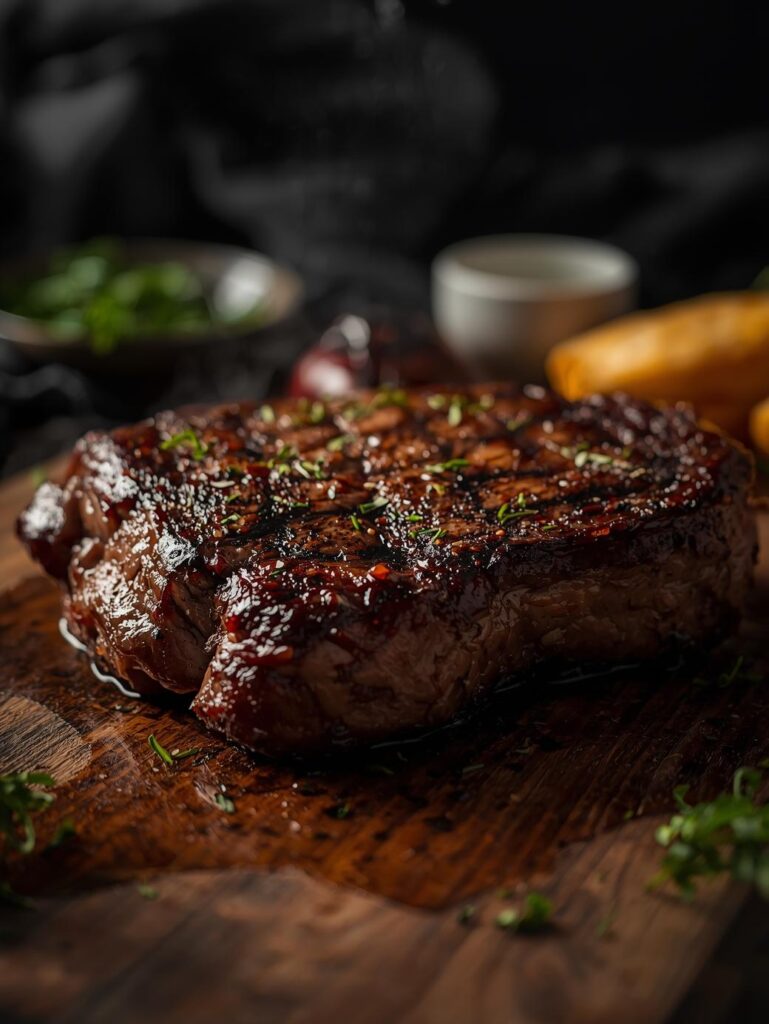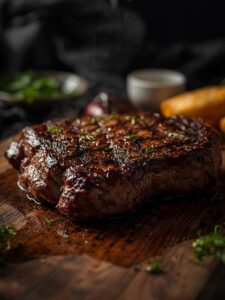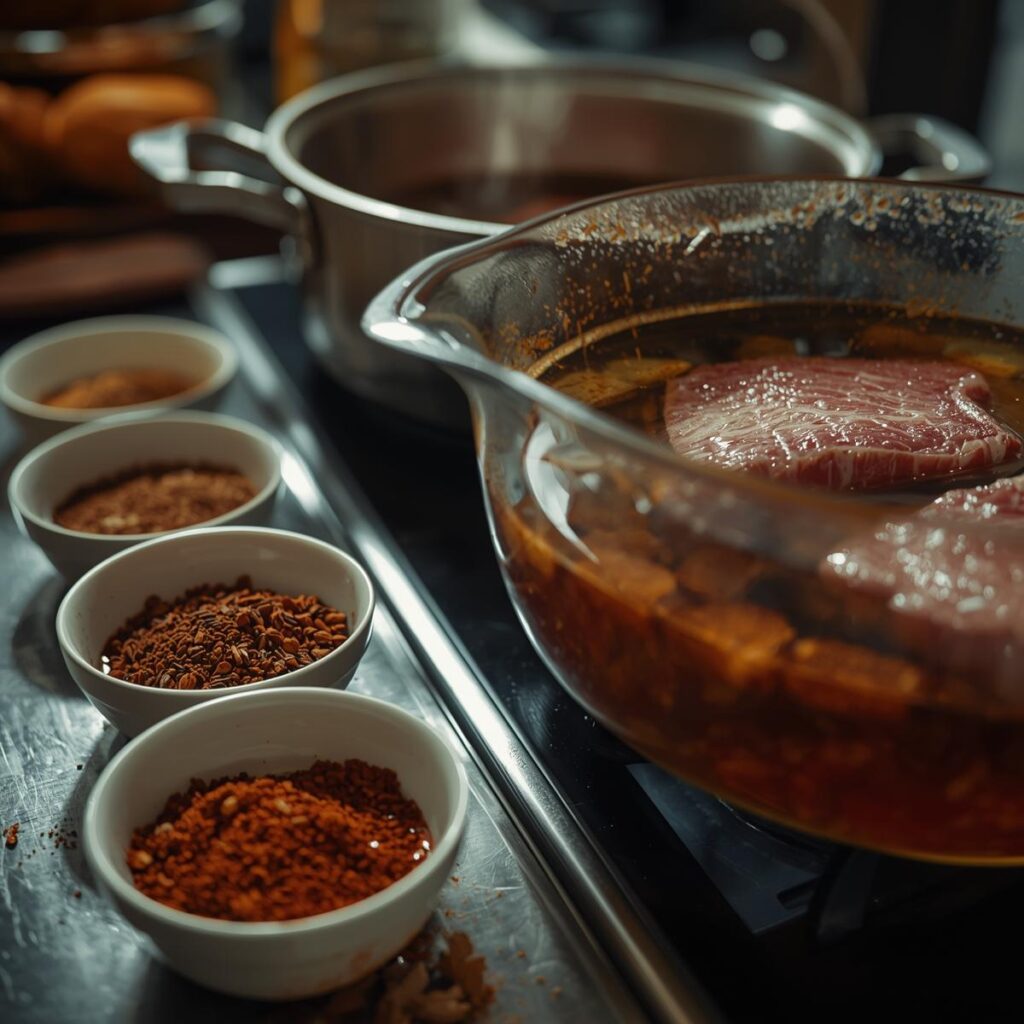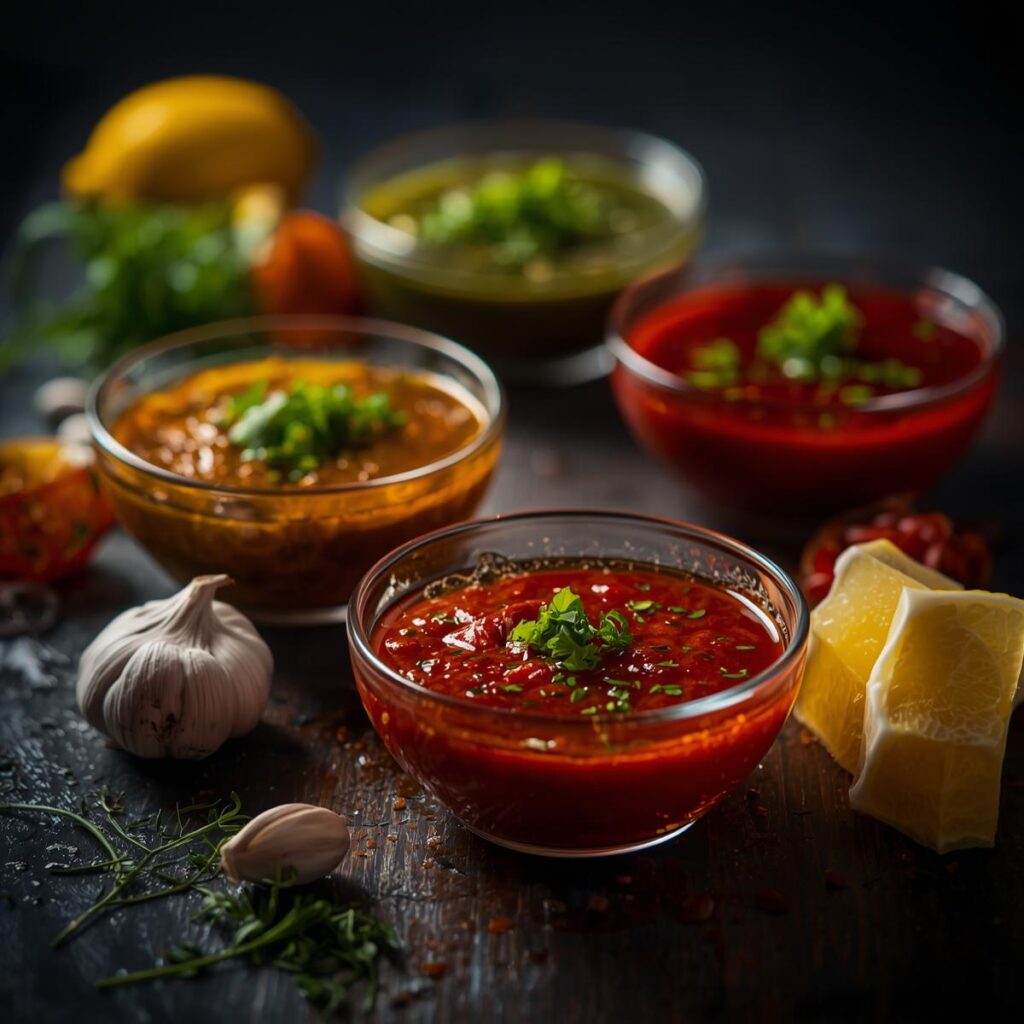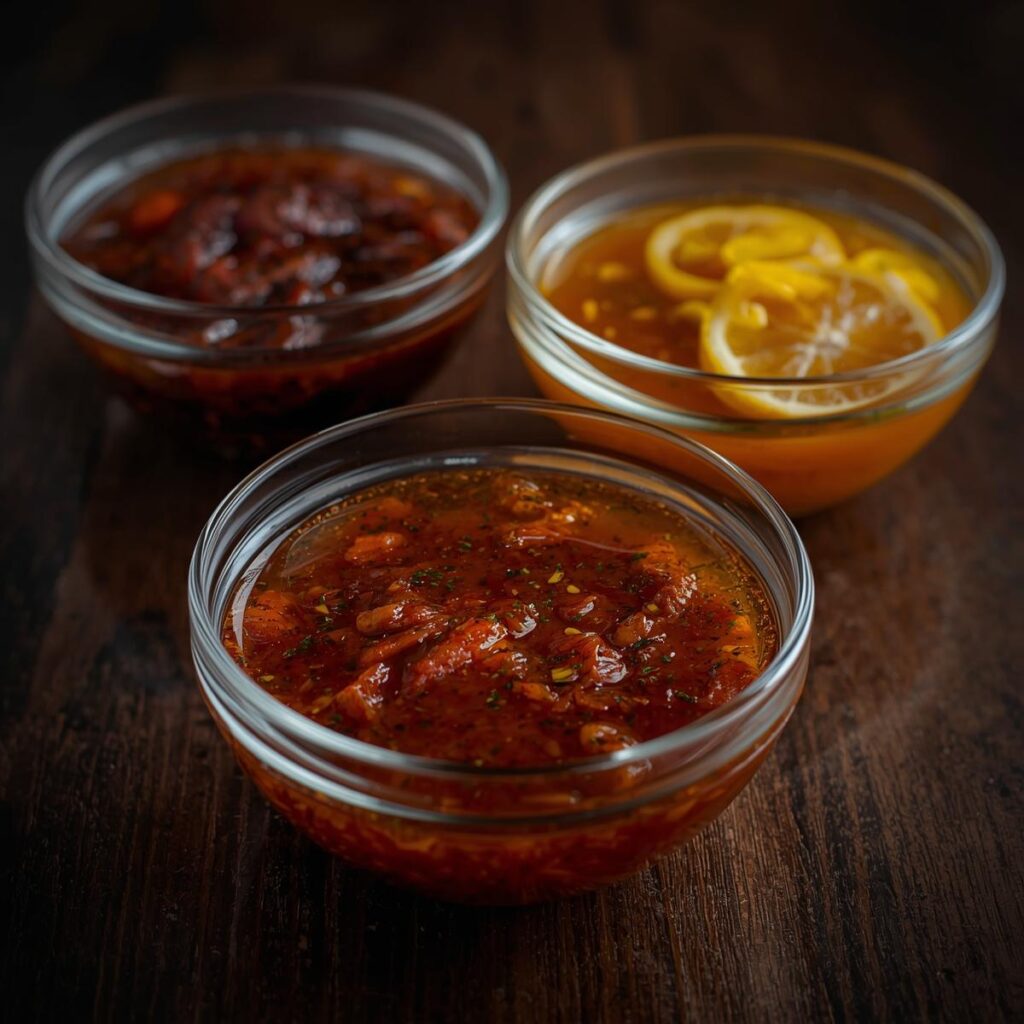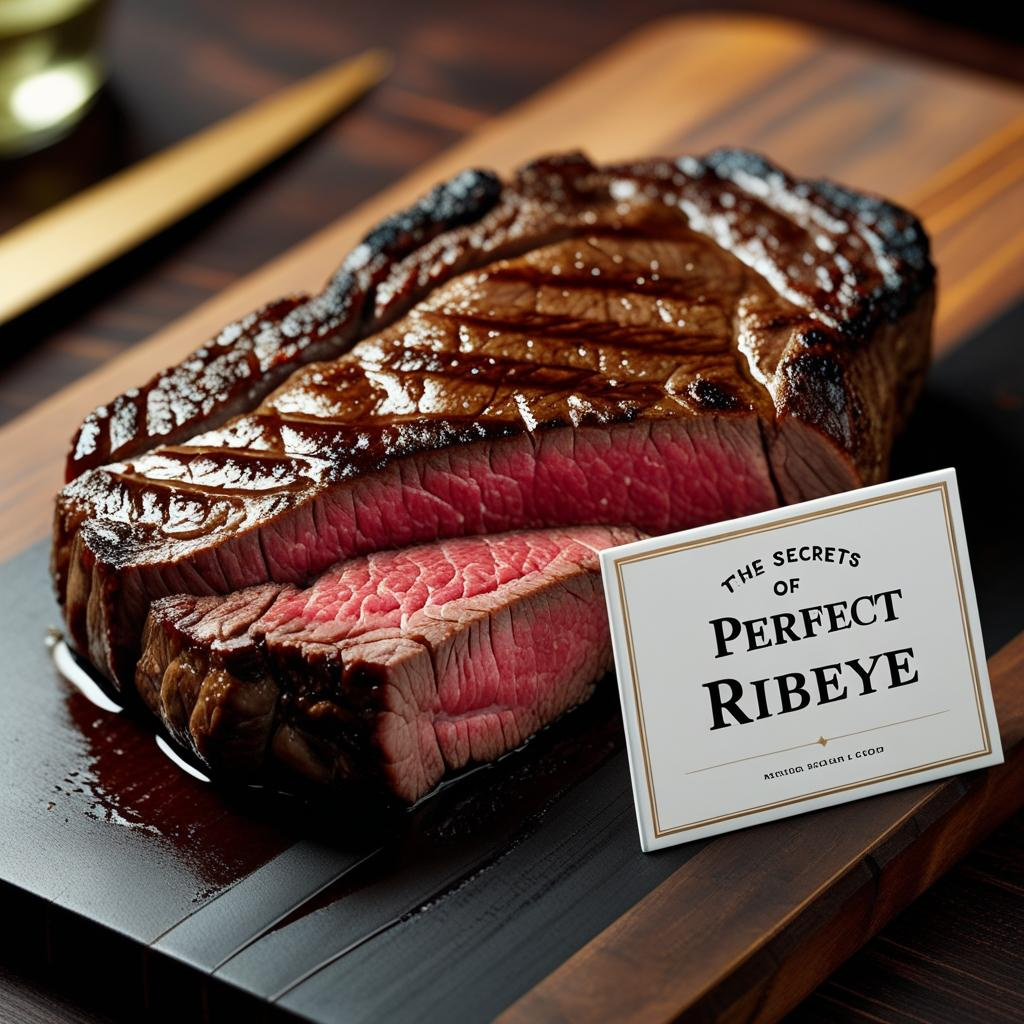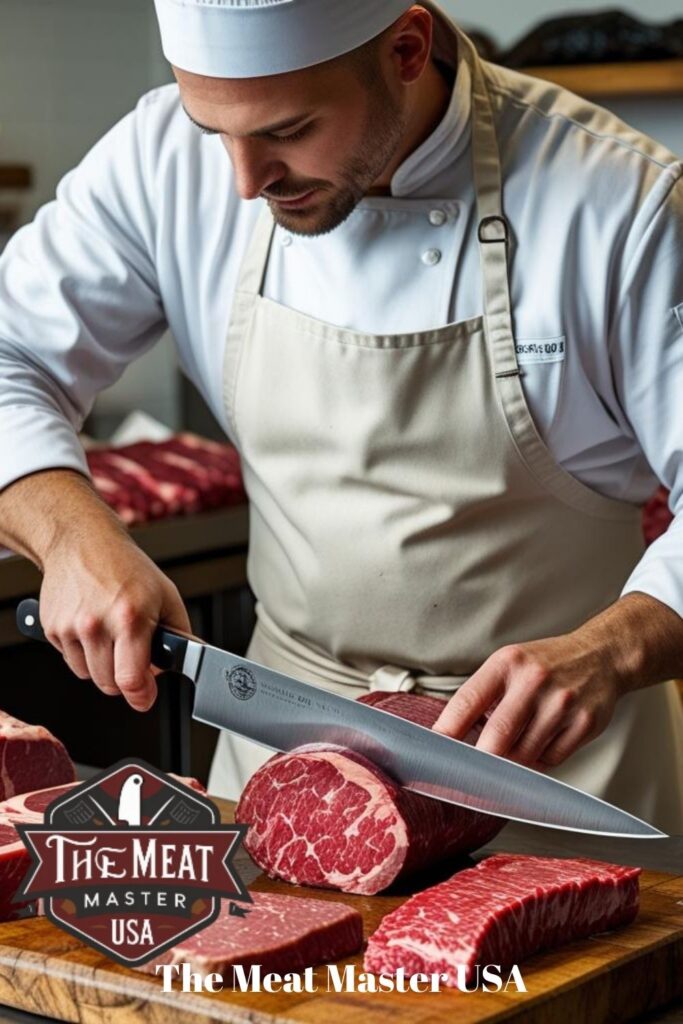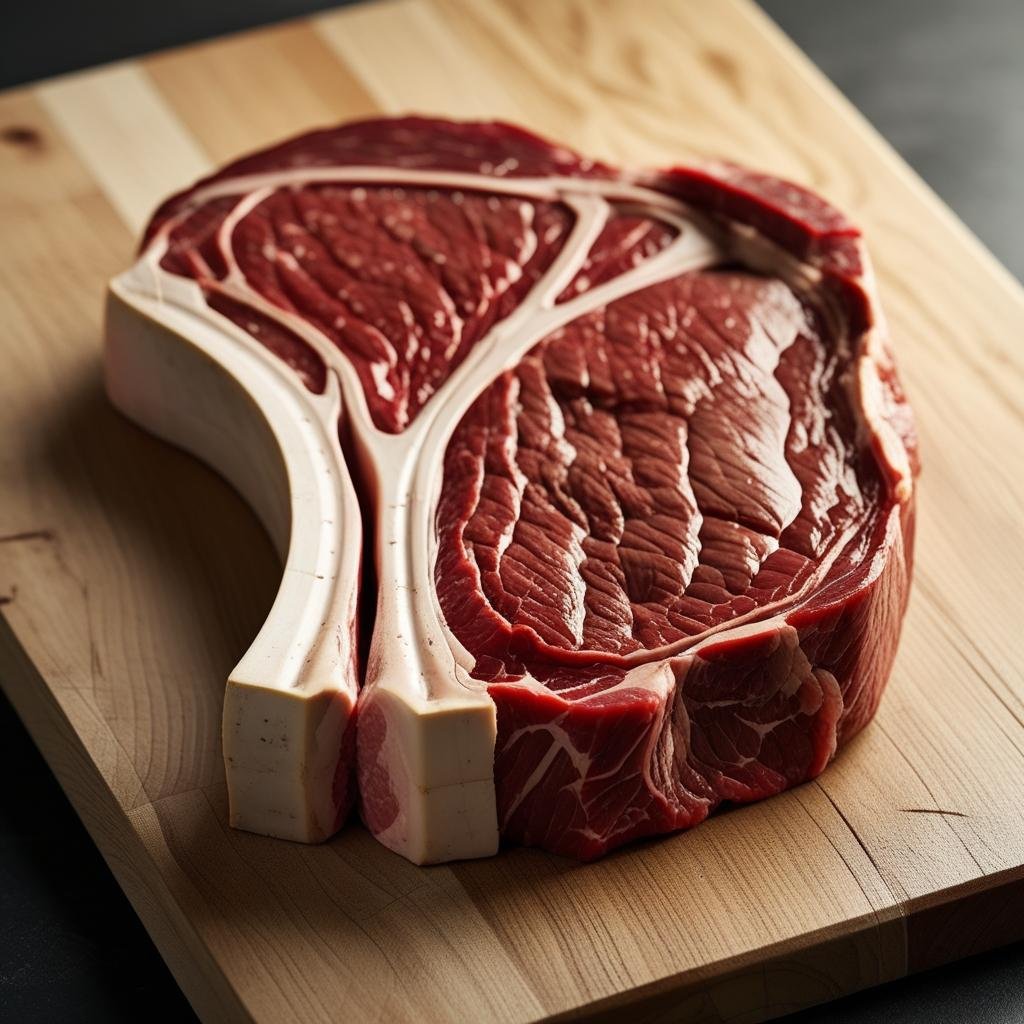Expert’s Note: This guide demystifies the often misunderstood world of marinades, a key topic in our Ultimate Guide to Grilling Steak. Learn which marinades actually penetrate meat and which merely coat the surface, so you can stop wasting time and start building real flavor.
STEAK MARINADES THAT ACTUALLY WORK: THE SCIENCE BEHIND FLAVOR PENETRATION
“For generations, home cooks have immersed steaks in complex marinades for hours, believing the flavors were slowly seeping deep into the meat. The disappointing truth? Most marinades barely penetrate beyond the first millimeter. But when you understand the science of how marinades actually work—not how we wish they worked—you can create powerful flavor bombs that transform good steak into unforgettable experiences.”
Steak Marinades That Actually Work: The Science Behind Flavor Penetration
Download our free Steak Marinade Recipe Cards with 5 scientifically-proven formulas.
The marinade is one of the most misunderstood techniques in the griller’s arsenal. We’ve been taught that time is the magic ingredient—the longer you marinate, the more flavor you get. But food science reveals a more nuanced reality. True marinade mastery isn’t about patience; it’s about understanding the three mechanisms of flavor transfer and designing your recipes to work with, not against, the laws of physics and chemistry.
🔬 THE THREE PATHS OF FLAVOR: HOW MARINADES ACTUALLY WORK
Forget everything you’ve heard about marinades “soaking in.” Flavor travels through meat via three distinct scientific processes.
⚗️ Mechanism 1: Surface Adhesion (The Flavor Coat)
This is what most marinades actually accomplish—and it’s more valuable than you might think.
The Science of Surface Flavor
- How it Works: Ingredients physically stick to the meat’s surface, creating a flavorful crust when cooked.
- Depth of Penetration: 0-1 mm
- Key Ingredients: Oils, thick sauces, pastes, chopped herbs and spices
- Time Required: 15 minutes to 2 hours (longer doesn’t help)
Best For: Creating a delicious crust and adding aromatics that will perfume the meat during cooking.
🧪 Mechanism 2: Osmotic Diffusion (The Brine Effect)
This is where real penetration happens, but it’s limited to specific types of molecules.
The Science of Salt and Sugar Penetration
- How it Works: Salt and sugar molecules are small enough to travel between muscle cells via osmosis, carrying some water-soluble flavors with them.
- Depth of Penetration: ¼ inch over 6-12 hours
- Key Ingredients: Salt, sugar, soy sauce, Worcestershire sauce
- Time Required: 2-24 hours for meaningful penetration
Best For: Seasoning meat throughout and improving moisture retention. This is why dry brining is so effective.
⚡ Mechanism 3: Enzymatic Breakdown (The Tenderizer)
The most powerful but dangerous mechanism—used correctly, it creates incredible tenderness; used incorrectly, it turns steak to mush.
The Science of Protein Digestion
- How it Works: Enzymes and acids break down muscle proteins and connective tissue.
- Depth of Penetration: Limited (enzymes are large molecules)
- Key Ingredients: Pineapple (bromelain), papaya (papain), kiwi (actinidin), dairy (calcium)
- Time Required: 30 minutes to 4 hours (very time-sensitive)
Best For: Tough cuts with lots of connective tissue. Use with extreme caution on tender steaks.
🎯 THE MARINADE MATRIX: MATCHING METHOD TO STEAK
Not all steaks benefit from marinating. Understanding which cuts to marinate—and why—is half the battle.
🎯 Steak Selection Guide: To Marinate or Not to Marinate?
| Steak Type | Marinade Goal | Recommended Time | Our Verdict |
|---|---|---|---|
| Ribeye, Strip, Filet | Surface flavor only | 30 min – 2 hours | ❌ Don’t marinate – use dry brine instead |
| Skirt, Flank, Hanger | Tenderize & flavor | 2-12 hours | ✅ Excellent candidates |
| Tri-Tip, Sirloin | Flavor enhancement | 4-24 hours | ✅ Good candidates |
| Budget Cuts | Tenderize & transform | 6-24 hours | ✅ Perfect for marinating |
Pro Tip: The Premium Steak Rule. Never marinate expensive, well-marbled steaks like ribeye or filet mignon. You’ll mask their natural flavor and texture. Instead, use a simple dry brine and add flavor with a compound butter after cooking.
🧪 THE MARINADE ARCHITECTURE: BUILDING BLOCKS THAT WORK
Every effective marinade contains three essential components. Understanding their roles lets you create your own masterpieces.
🏗️ Component 1: The Carrier (Oil)
Purpose: Carries fat-soluble flavors and helps prevent sticking
- Best Choices: Olive oil, avocado oil, sesame oil (for Asian flavors)
- Ratio: ½ to ¾ of your marinade volume
- Science: Oil doesn’t penetrate meat but carries flavor compounds that are soluble in fat
🧂 Component 2: The Penetrator (Salt/Liquid Aminos)
Purpose: Seasons deeply and enables osmotic diffusion
- Best Choices: Soy sauce, Worcestershire, fish sauce, salt
- Ratio: 10-20% of your marinade volume
- Science: Small salt molecules actually penetrate meat tissue, carrying some flavors with them
🎭 Component 3: The Flavor Amplifiers (Acids & Aromatics)
Purpose: Add complexity and help break down surface proteins
- Acids: Citrus juice, vinegar, wine, yogurt
- Aromatics: Garlic, ginger, herbs, spices
- Ratio: 10-20% of your marinade volume
- Science: Acids denature surface proteins but can make meat mushy if overused
🚀 FOUR SCIENTIFICALLY-PROVEN MARINADE FORMULAS
These recipes are engineered for specific results, not just random flavor combinations.
🥩 Classic Steakhouse Marinade
Best For: Skirt steak, flank steak
½ cup olive oil
¼ cup Worcestershire sauce
4 garlic cloves, minced
2 tbsp soy sauce
1 tbsp black pepper
1 tsp smoked paprika
Science: Worcestershire and soy provide deep salt penetration, while oil carries garlic and pepper flavors.
🍋 Mediterranean Herb Tenderizer
Best For: Lean sirloin, tri-tip
½ cup olive oil
¼ cup lemon juice
3 garlic cloves, minced
2 tbsp fresh rosemary
1 tbsp fresh oregano
1 tsp salt
Science: Lemon juice’s mild acid tenderizes surface, while salt penetrates with herb flavors.
🌶️ Korean Bulgogi-Style
Best For: Ribeye, strip steak (thin sliced)
½ cup soy sauce
3 tbsp brown sugar
2 tbsp sesame oil
4 garlic cloves, minced
2 tbsp grated pear*
1 tbsp gochujang
Science: *Pear contains natural tenderizing enzymes. Sugar and salt penetrate deeply.
🍯 Ginger-Soy Enzyme Boost
Best For: Tough budget cuts
½ cup soy sauce
2 tbsp grated ginger
2 tbsp honey
2 tbsp rice vinegar
1 tbsp sesame oil
¼ cup grated kiwi*
Science: *Kiwi contains actinidin, a powerful natural tenderizer. Use for 30-60 minutes only!
⏰ THE TIME-TEMPERATURE PARADOX: HOW LONG IS TOO LONG?
More time isn’t always better. In fact, for many marinades, it’s worse.
🎯 Marinade Timing Guide by Mechanism
| Marinade Type | Minimum Time | Ideal Time | Maximum Time | Risk of Overtime |
|---|---|---|---|---|
| Surface Coating | 15 minutes | 1-2 hours | 4 hours | Bitter herbs |
| Salt-Based | 2 hours | 6-12 hours | 24 hours | Too salty |
| Enzyme Tenderizer | 30 minutes | 1-2 hours | 4 hours | Mushy texture |
| Acid-Based | 30 minutes | 2-4 hours | 6 hours | Chalky surface |
🚨 COMMON MARINADE MISTAKES THAT RUIN STEAK
🎯 Marinade Pitfalls and Solutions
| Mistake | The Science | Solution |
|---|---|---|
| Marinating too long | Enzymes/acid break down protein structure | Follow timing guidelines strictly |
| Using too much acid | Denatures surface proteins, creates barrier | Keep acids to 10-20% of marinade volume |
| Marinating tender steaks | Destroys natural texture and flavor | Only marinate tough, lean cuts |
| Not patting dry before cooking | Prevents proper browning (Maillard reaction) | Always pat thoroughly dry with paper towels |
| Reusing marinade | Cross-contamination with raw meat juices | Boil for 5+ minutes if reusing, or make extra |
🏁 THE MODERN MARINADE PHILOSOPHY
Marinades aren’t obsolete—they’re just misunderstood. The key is using them strategically, not universally. Reserve marinating for cuts that actually benefit from the process: lean, tough steaks with lots of connective tissue that need both flavor and tenderizing.
For your premium, well-marbled steaks, trust the natural flavor of the beef enhanced by proper dry brining and high-heat cooking. Use marinades as the specialized tools they are, not as one-size-fits-all solutions.
Your mission: Pick one tough cut from your butcher—skirt, flank, or hanger steak—and apply one of the scientific marinades from this guide. Pay close attention to the timing. Experience firsthand how understanding the science transforms random soaking into precision flavor engineering.
Master the Science of Flavor: Continue your culinary education with these essential guides:

